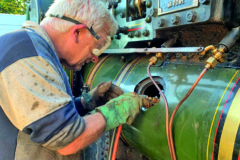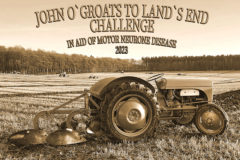1943 Austin K2 NAFFI wagon restored
Posted by Chris Graham on 6th March 2022
Mike Neale tells the story of a 1943 Austin K2 that starred in a film, then almost rotted away before being rescued and restored.
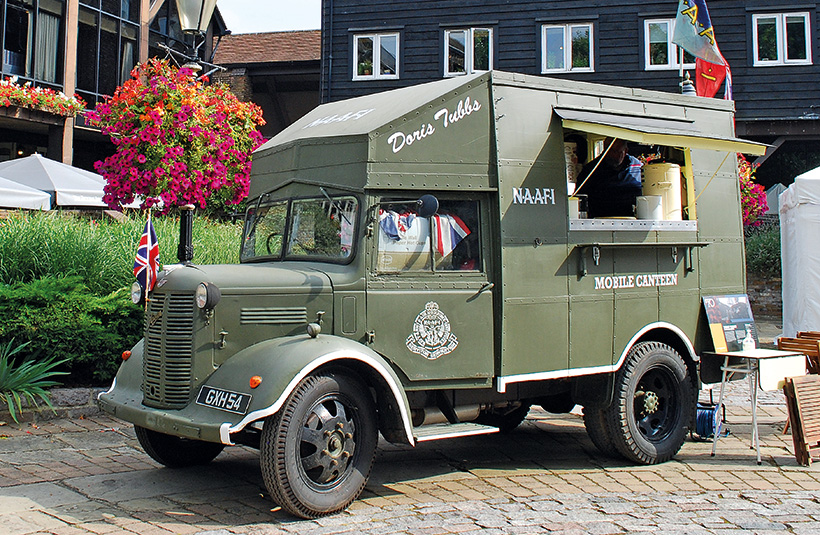
Dave Piper’s beautifully-restored and now fully-functioning 1943 Austin K2 NAAFI wagon.
The Austin K2 was introduced in January 1939 as a two-axle, normal control truck with a two-ton payload, built at Longbridge. At the same time, a 30cwt truck – the K30 – and a three-ton truck – the K3 – were also introduced, all with the same engine. The K30 had single rear wheels while the K2 and K3 had twin rear wheels. The four/five-ton Austin K4 followed, in 1941.
The standardised engine was an Austin six-cylinder 3,459cc, 70hp overhead valve petrol unit, with a bore of 3.35in and stroke of 4in. It transmitted its power through a four-speed gearbox, a single dry plate clutch and a fully floating rear axle with spiral-bevel final drive. Lockheed hydraulic brakes operated on all four wheels, and Austin K2s had six-stud wheels, distinguishing them from the K3 and K4 which had eight studs.

Not the actual van featured here, but another Austin K2, seen at the Imperial War Museum, Duxford. This is how ‘our’ van would probably have looked when new.
Two different wheelbases were available; 9ft 3in or 11ft 2in. The short wheelbase K2 was discontinued in 1945, with the long wheelbase version being built until September 1948, when an updated model was launched – the K2 Series I, with a 3,995cc engine.
Most wartime K2s were destined for military or government department use, with over 13,000 built as ambulances that utilised a body produced by Mann Egerton, and canvas doors to save on scarce materials. This was the K2Y, affectionately known as ‘Katy’, and total pre-war and wartime K2 production from 1939-46 amounted to 38,310 vehicles.

As found and covered in moss.
Other K2s were supplied to the NAAFI as canteen vans, while many others were originally supplied to the National Fire Service. Around were 5,000 bodied as fire trucks.
The example featured here was built in 1943, as an Auxiliary Towing Vehicle, or ATV, and painted in NFS pale grey livery. It was used as a fast-response vehicle and towed a water pump during the war. The crew would have sat on side-facing bench seats with equipment stored below, in the square, open-backed body. A 30ft two-section wooden extension ladder would have been carried on the roof.
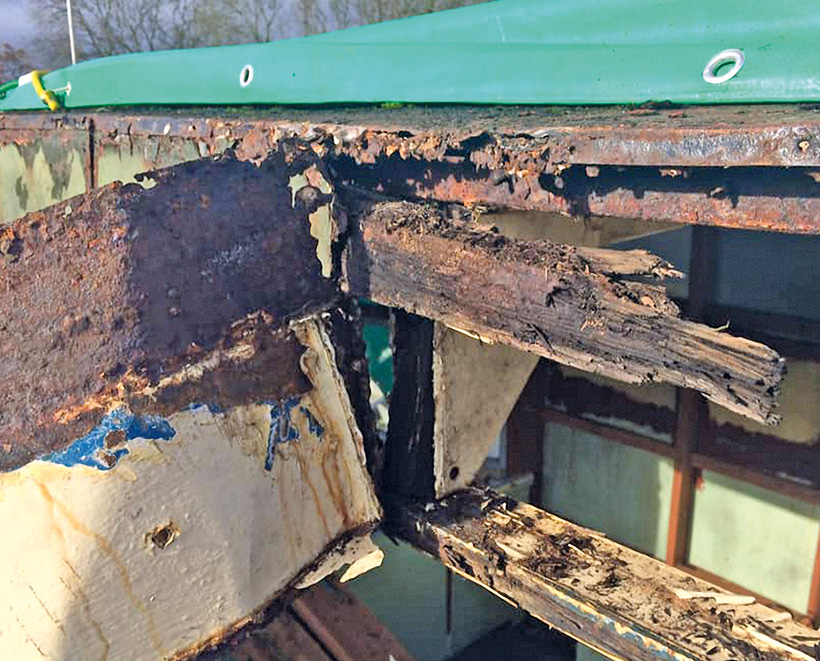
Most of the wood had rotted away.
The National Fire Service was formed in August 1941, with the country divided into 11 regions, made up of 33 fire areas. In each area there were many existing fire brigades, but all brigades in a fire area became grouped into one force under the control of an Area Commander. The Chief Commander in London had overall control.
The Navy, Army and Air Force Institute (NAAFI) had been established by the British Government on December 9th, 1920, to run recreational establishments for the armed forces, and to sell goods to servicemen and their families. It extended its operations over the next few years to serve military bases and deployments across the world. At the outbreak of the Second World War, the NAAFI expanded massively to support troops in service, increasing from 8,000 employees to 110,000.
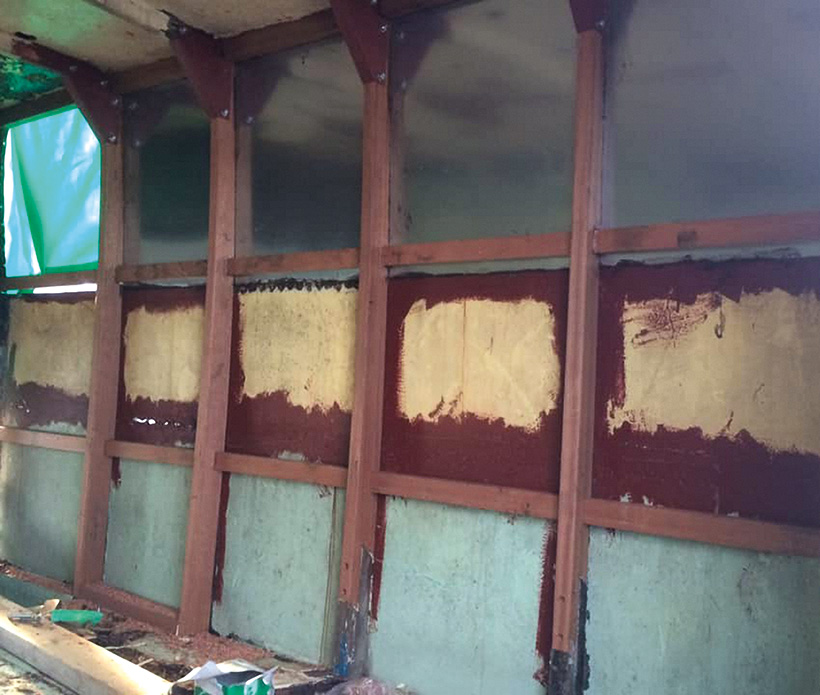
New mahogany, prior to painting.
All sorts of different vehicles were converted into mobile canteens by the NAAFI at that time – they had to use whatever they could get their hands on, even including hearses. The American Red Cross donated some vehicles.
Other mobile canteens were operated during the Blitz in London by the Women’s Voluntary Services for Air Raid Precautions (the WVS, later renamed WRVS) for ARP wardens, fire fighters and civilian bomb victims. The NFS also had a fleet of mobile kitchens with tall, wide bodies containing coal-fired kitchen ranges, including Austin K4 versions.

Work underway, with the new roof in place.
Operations were scaled back after the war, but the NAAFI still exists today, providing facilities for British troops where required.
So why is this Austin K2 now a NAAFI canteen van, if it was originally an NFS fire truck? Was it perhaps converted during the war years, as some were? Well, actually, no. The vehicle in this form goes back only to 1979, and the John Schlesinger film, Yanks. In the film, two American GIs, played by Richard Gere and William Devane, stationed in the north of England during the war, begin affairs with two British women, played by Vanessa Redgrave and Lisa Eichhorn. However, this presents something of a moral dilemma, as both women are already engaged to British soldiers who have been sent away to the front.
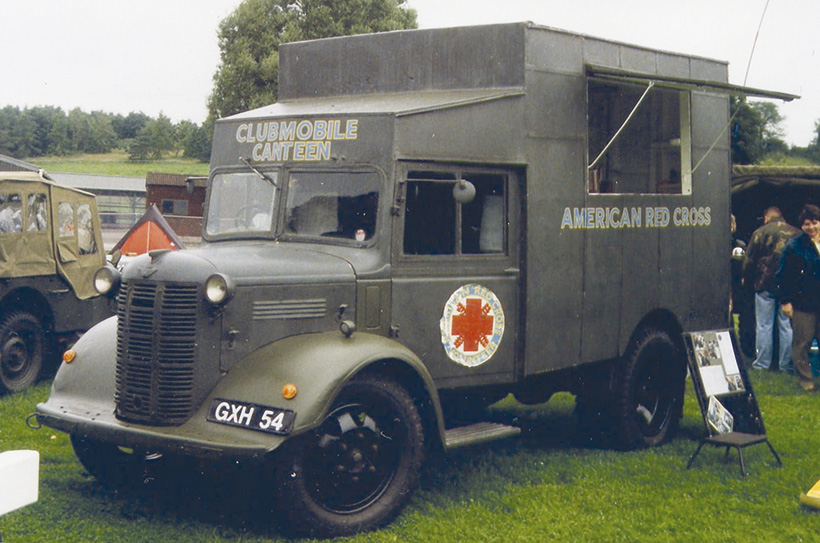
Appeared in the 1979 wartime film Yanks.
The filmmakers wanted a typical wartime canteen van for some of the scenes, yet no suitable vehicle in this form could be found, but a run-down Austin K2 ATV was located and rebuilt to resemble one. That was GXH54. It had remained in grey NFS livery for several years and had been used by wartime re-enactors, then it found its way to a museum in Cornwall which, after a while, put it into storage where it then languished. That’s when the filmmakers stepped in.
The converted canteen van appeared in the film in matt olive green with ‘American Red Cross’ on the side and ‘Clubmobile Canteen’ above the windscreen. The flashing orange indicators on the front wings, which the van still has today, had already been fitted and were left on for the film, which it certainly wouldn’t have had in the 1940s, but perhaps I’m being nit-picky…
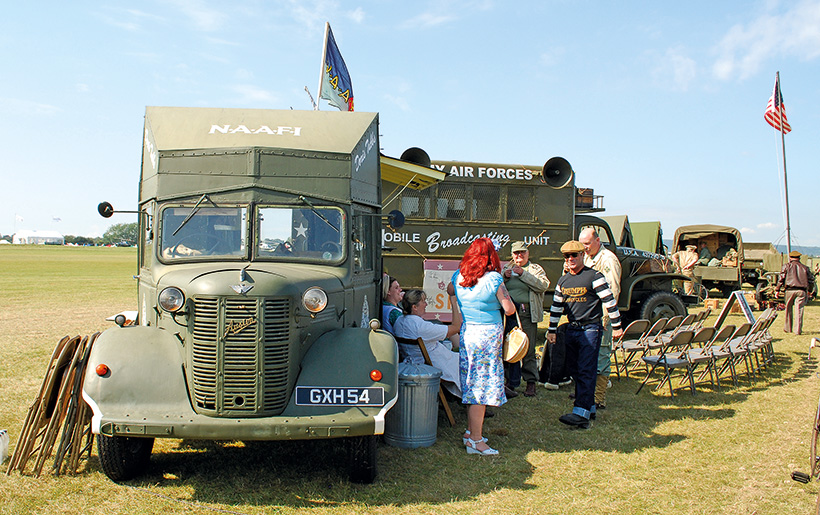
In use at a mocked-up airfield military encampment at Goodwood.
After the filming had ended, the van was acquired by Jean and Robby Fleming, who put it into NAAFI livery, adding wartime white paint edging around the wing edges and bottom of the van body. They used it a lot over many years in that form, taking it to shows and re-enactments, even travelling over to France with it. However, one day it broke down and they parked it in their garden, where it then remained for many years.
Saved and restored
Enter current owner Dave Piper. “I was drawn to the van because it was a NAAFI wagon, so you can do something functional with it – turn up at a ’40s event, make tea, or cook a meal. I negotiated for 18 months before Jean and Robby agreed to sell it,” explains Dave. That was in December 2018. “If it had stayed there another year, I don’t think it would have been saveable. It was thick with moss over the roof when we pulled it out of the garden.”
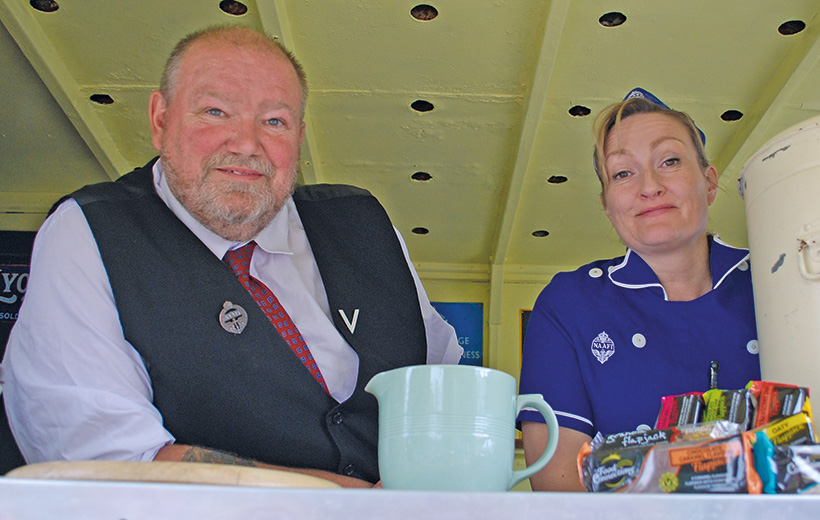
Debbie and Dave dressed appropriately and ready to serve you…
The wood-framed body was almost completely rotten. “I replaced it with around £3,800-worth of new mahogany, and then painted it. It seemed a shame to cover it with paint, but it had to be done as that’s how it would have been originally,” Dave laments.
The top half of the body is all new, as the whole roof was beyond repair, and it was leaking into the cab. The film company hadn’t done a top-notch job but. after all, it was only needed for a few weeks of filming. When he rebuilt it, Dave changed the shape of the front section of roof over the cab to provide space to store bedding at shows. As well as being more practical, I think the shape of the roof now looks much better, as it had an odd step in it before, whereas now it blends into the rear body.
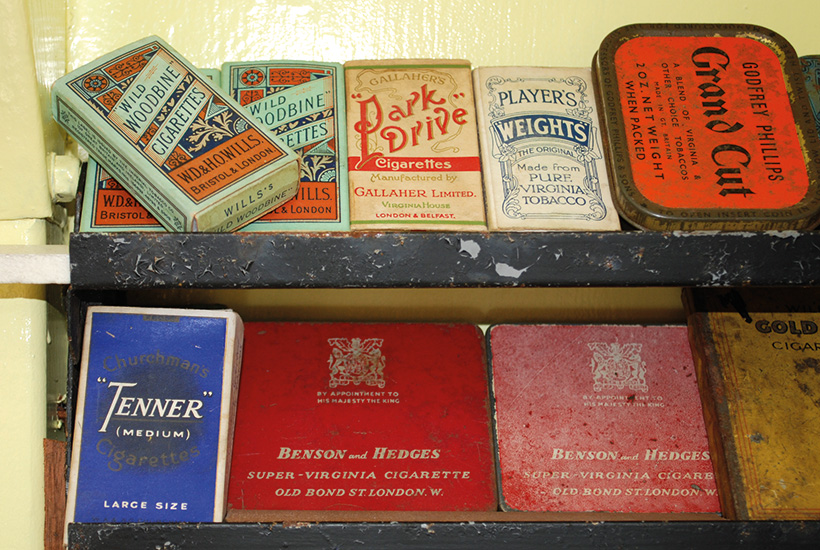
Other product lines were available – and much more popular then than now.
The van wouldn’t run when Dave got it, there were no brakes and the distributor was missing. He was, however, keen to keep as much of the original vehicle as possible. The engine and running gear are original, as are the wings and doors. Some further repair work will be needed to the cab doors when time permits, however.
Dave decided to hand-paint the van, as it wouldn’t have been a perfect finish if it had been a wartime NAAFI van, and it certainly looks the part. The Austin is named Doris Tubbs, after Dave’s nana.
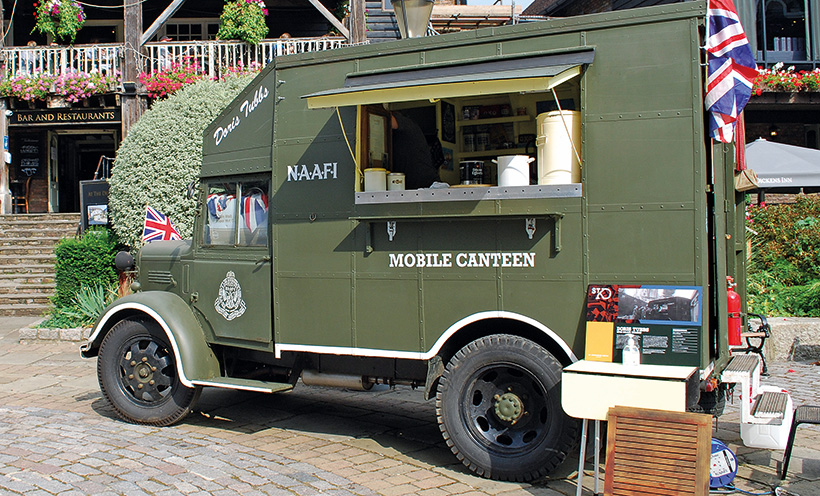
To complete it, Dave – ably assisted by Debbie Major – has collected a lot of original NAAFI fittings, period tins and signs. A lot of these came out of a totally derelict van, including the stove which Dave had reconditioned and re-jetted. Debbie made a new set of curtains to finish it off.
The van was finished and back on the road in April 2019. Since then, Dave and Debbie have continued in Jean and Robby’s footsteps, taking the mobile canteen to classic car shows and 1940s events such as the one held at Havenstreet, on the Isle of Wight. The Austin was period-perfect for selling tea at a Dunkirk Little Ships commemorative event in St. Katherine Docks next to Tower Bridge in London, where I caught up with them, as well as at the Goodwood Revival.
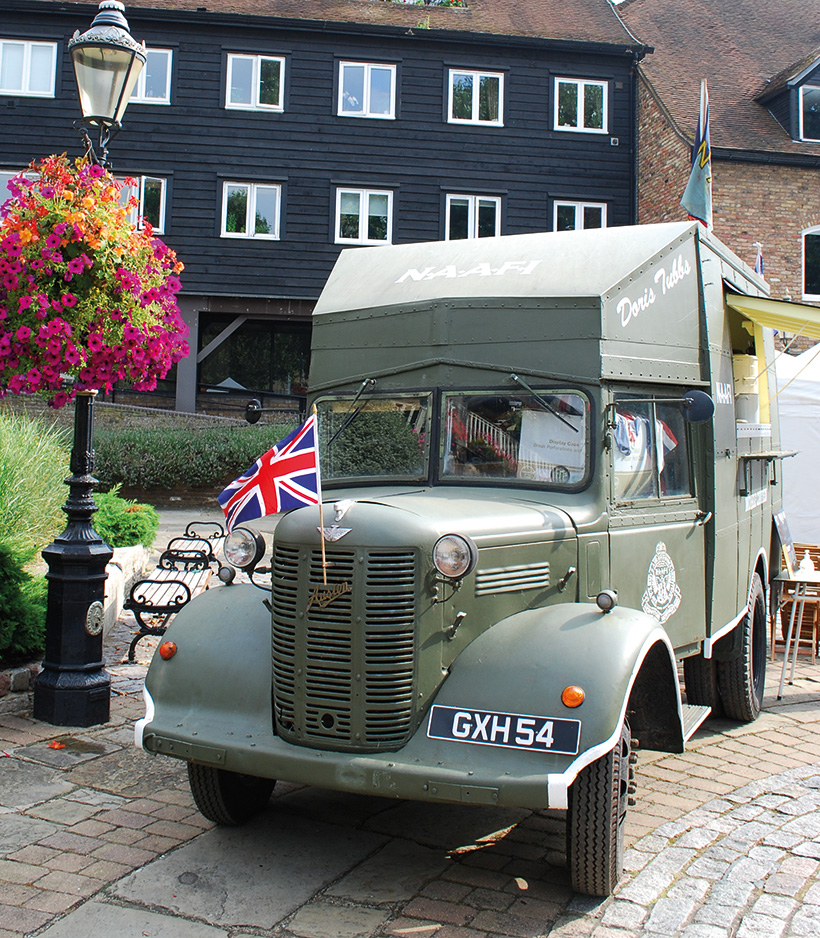
Dave also owns a 1936 Fordson Standard tractor and a 1946 Willys Jeep which has also appeared at Goodwood, while Debbie owns ‘Ivy’, an Anderson shelter on wheels.
Thanks to Debbi and Dave for taking a break from serving teas to assist with this article.
For a money-saving subscription to Classic & Vintage Commercials magazine, simply click HERE



